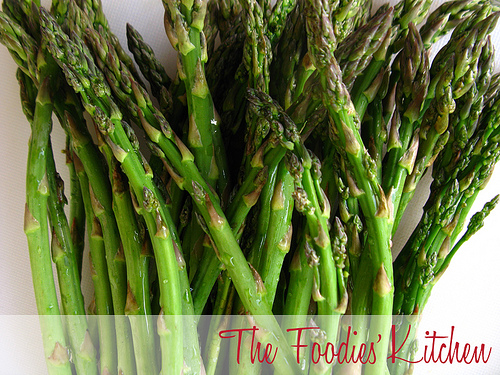
Vegetable of the Month: Asparagus
This post is also available in / Esta entrada también está disponible en ESPAÑOL (SPANISH)
The fleshy green spears of asparagus are both succulent and tender and have been considered a delicacy since ancient times. This highly prized vegetable arrives with the coming of spring, when its shoots break through the soil and reach their 6-8 inch harvest length.
History
Asparagus has been prized as an epicurean delight and for its medicinal properties for almost 2000 years. Its presence across most continents is partly due to its many different species. In terms of commercial production, China (587,500 tons) and Peru (186,000 tons) are currently the world’s largest producers and exporters of asparagus. Next in line as commercial producers are the United States (102,780 tons) and Mexico (67,247 tons).
Health Benefits:
- Anti-Inflammatory and Antioxidant: It’s not surprising to see asparagus being heralded as an anti-inflammatory food because it provides a truly unique combination of anti-inflammatory nutrients. Alongside of these anti-inflammatory phytonutrients, asparagus provides a wide variety of antioxidant nutrients, including vitamin C, beta-carotene, and the minerals zinc, manganese, and selenium. Anti-inflammatory and antioxidant nutrients are some of the best risk reducers we know for common chronic health problems including type 2 diabetes and heart disease. These nutrients are also special risk reducers in the case of certain cancers.
- Digestive Support: It also aids as a digestive support food. One key factor in this regard is its inulin content. Like chicory root and Jerusalem artichoke, asparagus contains significant amounts of the nutrient inulin. Inulin is a unique type of carbohydrate called a polyfructan, and in practical terms, healthcare practitioners often refer to it as a “prebiotic.” Alongside of its unusual inulin content, asparagus is rich in fiber (about 3 grams per cup, including about 2 grams of insoluble fiber and 1 gram of soluble fiber) and also contains a noteworthy amount of protein (about 4-5 grams per cup). Both fiber and protein help stabilize our digestion and keep food moving through us at the desirable rate. (By contrast, too much fat can slow down our digestion rate more than desired, and too much sugar or simple starch can speed it up more than desired.
How to Select and Store
Asparagus stalks should be rounded, and neither fat nor twisted. Look for firm, thin stems with deep green or purplish closed tips. The cut ends should not be too woody, although a little woodiness at the base prevents the stalk from drying out. Once trimmed and cooked, asparagus loses about half its total weight. Use asparagus within a day or two after purchasing for best flavor and texture. Store in the refrigerator with the ends wrapped in a damp paper towel.
Tips for Preparing Asparagus:
Thin asparagus does not require peeling. Asparagus with thick stems should be peeled because the stems are usually tough and stringy. Remove the tough outer skin of the bottom portion of the stem (not the tips) with a vegetable peeler. Wash asparagus under cold water to remove any sand or soil residues. It is best to cook asparagus whole.
Serving Ideas:
- Add cold asparagus to your favorite salad.
- Toss freshly cooked pasta with asparagus, olive oil and your favorite pasta spices. We especially enjoy thyme, tarragon and rosemary.
- Chopped asparagus make a flavorful and colorful addition to omelets.
- Healthy saute asparagus with garlic, shiitake mushrooms and tofu or chicken for a complete meal.
Recipes from The Foodies’ Kitchen
Shaved Asparagus Pizza
Grilled Asparagus
Source: The Worlds’ Healthiest Foods
© 2011 – 2020, The Foodies’ Kitchen. All rights reserved | Todos los derechos reservados
This post is also available in / Esta entrada también está disponible en ESPAÑOL (SPANISH)



